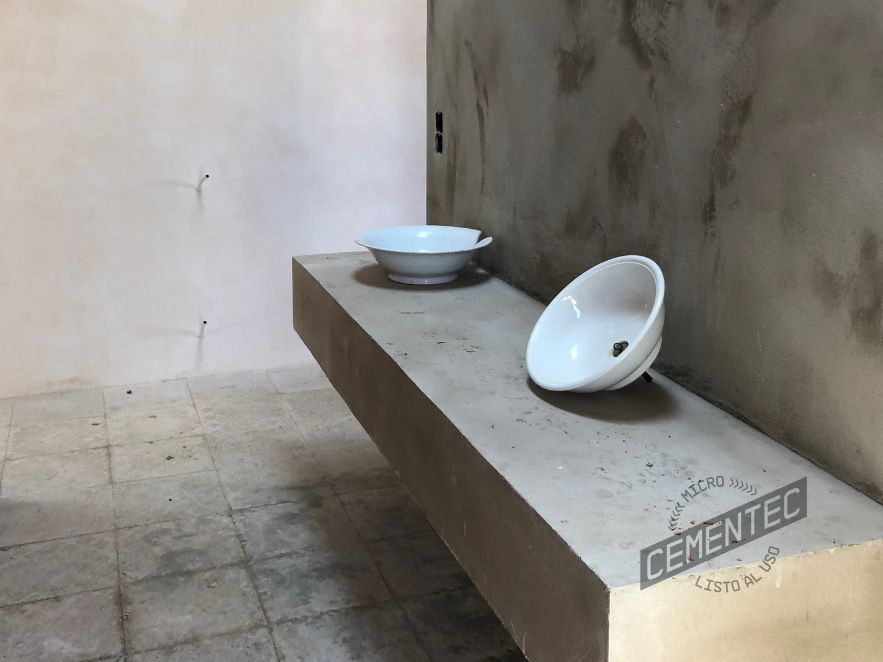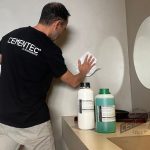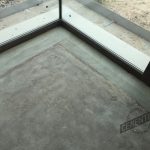Are you aiming to ensure the longevity of your microcement projects? The key might lie in applying the appropriate epoxy primer at the right stage. This crucial treatment enhances adhesion, providing a uniform and resilient surface for both new constructions and renovations.
The epoxy primer serves as a bonding agent between the microcement and the surface, consolidating porous areas and guaranteeing a smooth, even finish. Proper application not only enhances adhesion but also extends the lifespan of the coating, preventing common issues like cracking.
Interested in understanding the significance of epoxy primer for your microcement projects? Dive into this Cementec article to explore the disparities between primer and sealant, various epoxy primer types (one-component and two-component), and their application methods tailored to different surface characteristics.
Let’s delve deeper into the topic!
What is a priming product?
Priming is a preparatory coating crucial for surface preparation, involving materials like fiberglass mesh. Unlike polyurethane varnish, which protects the final microcement layer, primer primes the surface, enhancing microcement adhesion and initial surface protection.
Unlike polyurethane varnish, associated with the final protection of microcement, and although it does not provide a final finish; The primer plays a relevant role in the initial protection of the surface and in improving the adhesion of the microcement. Ensuring that the coating adheres effectively and uniformly, avoiding future problems such as peeling or the appearance of imperfections.
When is priming necessary?

For microcement applicators, priming post-surface preparation is a critical initial step, especially on non-porous or treated surfaces, ensuring uniform and lasting adhesion. Meticulous sanding followed by thorough cleaning to remove contaminants is imperative before priming.
Distinguishing primer from sealer?
Therefore, and to clear up any confusion regarding microcement primer and sealer, it is essential to understand that they both play different but crucial roles that ensure both the durability and aesthetics of the finish.
On the one hand, primers, applied directly to the prepared substrate, prepare and stabilize surfaces, significantly improving microcement adhesion. This is especially relevant on non-absorbent or uneven surfaces, where it helps homogenize absorption and provides a solid base for subsequent layers.
In contrast, sealers, applied post-microcement layers, enhance durability, resist stains, and additionally, the sealant determines the visual finish of the microcement, whether providing a satin, matte shine or a specific texture, and enhances the colour and depth of the applied texture.
Both products are essential to ensure that the microcement coating is not only visually attractive, but also durable and suitable to withstand the conditions of the environment where it is applied.
Types of priming products?
Accordingly, Cementec offers two epoxy primer varieties, tailored to optimize surface preparation. These primers are formulated to meet different needs and conditions of the surfaces to be treated:
- One-component primer: Consolidator and Consolidator Forte.
- Two-component epoxy primer: Seal.
Below, we will detail the specific composition, application method, and particular benefits of each type of primer to help you select the most suitable one for your project.
One-component primer for microcement: Consolidator
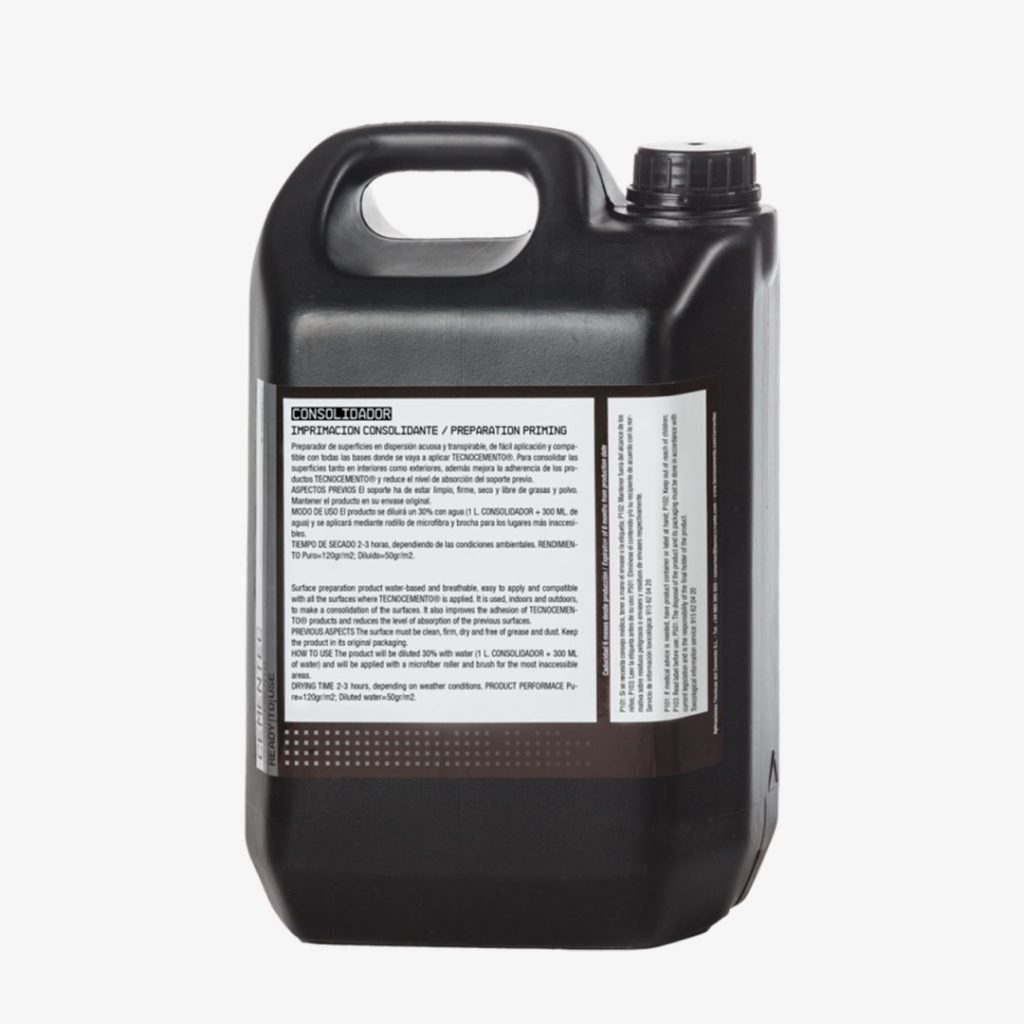
The one-component primer is essential in preparing surfaces for the application of microcement. This product not only cleans and fixes the subsequently applied materials, but also consolidates the support and detects any cracks or minimal irregularities on the surface.
- Consolidator: acts as a consolidating sealant that improves the fixation and cleanliness of the base material. Its main advantage is its ability to reveal hidden incidents in the support, such as imperceptible cracks, thus guaranteeing an application of the microcement on an optimal and safe base.
- Consolidator Forte: Similar to Consolidator, this water-based and acrylic product is designed to increase the adhesion of subsequent layers, such as reinforcing fibre mesh. It is ideal for projects that require greater support fortification before the final application of microcement.
Advantages of using the one-component epoxy primer, Consolidador
The use of Cementec’s “Consolidador” one-component primer offers several key advantages, making this product an outstanding choice for professionals and people interested in the application of ready-to-use microcement.
- Product without harmful materials: its environmentally friendly formulation prevents the emission of volatile organic compounds (VOCs), common in solvent-based products, making it safer for the user and the environment.
- Absence of strong odors: unlike many epoxy primers that can have a strong and persistent odor, Cementec Consolidator is odorless. This improves comfort during application, especially in closed or poorly ventilated spaces.
- Simplicity in application: this product is designed for easy application with a roller, allowing for quick and uniform coverage. Its viscosity is optimized to spread smoothly, ensuring that the support is completely covered without leaving gaps or excessive build-up.
- Consolidates and prepares the support to apply the microcement: it acts by consolidating the underlying support and improves the adhesion of the microcement that will be applied on top. This is essential to avoid future delaminations or detachments. It also ensures that any irregularities on the surface are treated. This includes leveling small cracks or pores in the microcement.
Two-component epoxy primer for microcement: Seal
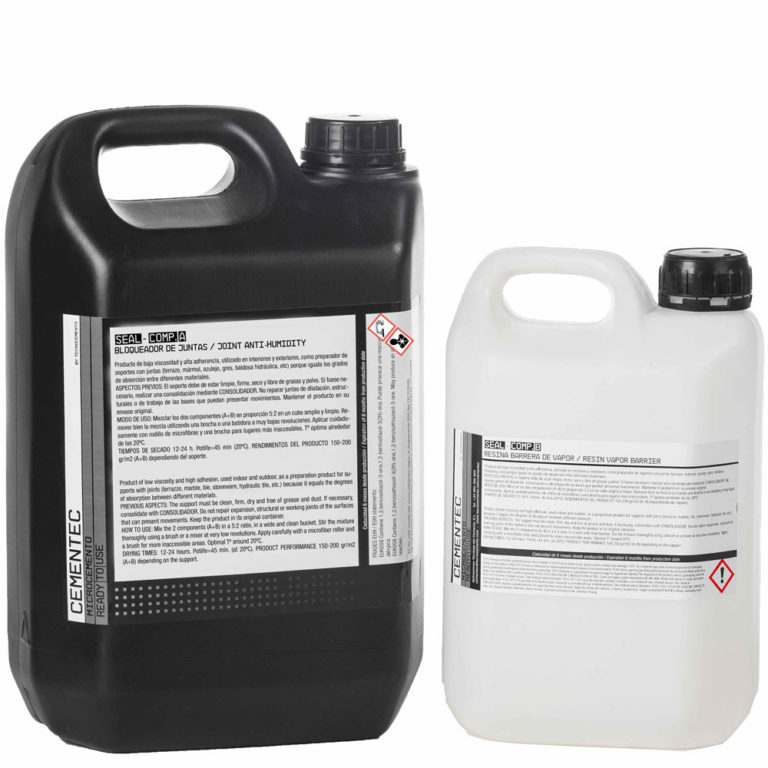
Next, the two-component epoxy primer is crucial for the preparation of surfaces that contain joints. This product has proven its effectiveness throughout numerous projects, providing exceptional safety in the application of microcement.
As a 2-component epoxy resin, Cementec Seal not only offers a high degree of adhesion, but also provides a thick and resistant protective layer. This feature is essential to reinforce the properties of the fiberglass mesh that is often used in construction and remodelling work.
In addition, Seal specializes in unifying and stabilizing absorption on various supports, such as tiles, stoneware and tiles, thus ensuring a uniform and consistent application of the coating. Its ability to homogenize surfaces guarantees an imperfection-free finish and increases the durability of the final coating.
Advantages of using Cementec Seal two-component epoxy primer
Likewise, the main benefits of using Cementec’s Seal two-component epoxy primer are immediately detailed:
- Easy roller application: As with the previous case, this primer can be applied simply and uniformly, facilitating a finish without imperfections and reducing work time.
- Improved Hardness and Strength: Seal provides an extremely hard, wear-resistant surface, protecting the substrate from mechanical and chemical damage, which is essential in high-traffic environments or where additional durability is required.
- Neutralizes the absorption of supports with joints: such as tile floors or tile coverings, balancing the differences in the absorption of the materials and ensuring a homogeneous finish.
- Increases the support’s capacity to retain movements and structural changes: thanks to its elasticity and robust composition, it improves the adhesion of the microcement, reducing the risk of cracks.
- Neutralizes minimal or residual moisture in the support (it is not waterproofing): it blocks surface moisture that may affect the adhesion or finish of the applied coating, providing additional protection against environmental humidity without becoming waterproofing.
What materials do you need to apply the epoxy primer before the ready-to-use microcement?
Regarding the materials required to apply the Cementec Consolidator one-component primer, we find:
- Plastic pail.
- 22 cm microfiber roller.
- Brush.
- Measurement jar.
- Measuring jug.
- 6-10 cm spatula.
- Orbital sander.
- Vacuum cleaner.
- Dustpan and broom.
- To protect the areas that will not be covered: corrugated cardboard, black plastic to cover and masking tape.
- Protective equipment: dust mask, gloves, protective cap, knee pads, suitable footwear and clean work clothes.
At the same time, the materials you need to apply the Cementec Seal two-component epoxy primer, we find:
- Bucket.
- 22 cm microfiber roller.
- Brush.
- 24×10 cm trowel.
- Measuring jug.
- 6-10 cm spatula.
- Orbital sander.
- Vacuum cleaner.
- Dustpan and broom.
- Mixer or drill with mixing rod.
- To protect the areas that will not be covered: corrugated cardboard, black plastic to cover and masking tape.
- Protective equipment: dust mask, gloves, protective cap, knee pads, appropriate footwear and protective clothing.
How to apply epoxy primer before ready-to-use microcement
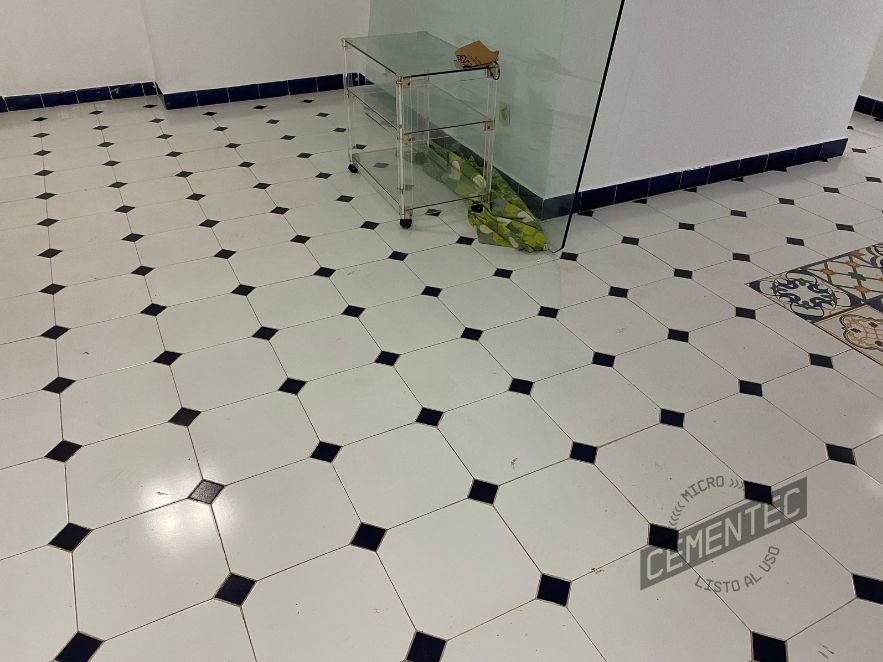
Before beginning the application of epoxy primer, it is essential to understand the steps and techniques that will ensure that the primer is applied effectively, maximizing its adhesion and strength properties.
To do this, at Cementec we bring you the step by step that you were looking for.
How to apply one-component primer Consolidator step by step
- Start by protecting the surrounding areas with masking tape to avoid accidental stains during application.
- Make sure the surface is firmly anchored and has no peeling. To do this, sand the support using 80-grit sandpaper and use a spatula to treat the adjacent areas. For large areas, you can use an orbital sander to remove imperfections and ensure the surface is flat and level.
- After sanding, protect the adjacent areas again with plastic and masking tape. If you detect significant cracks, repair these areas following the appropriate instructions and wait a week before proceeding with the application of Cementec microcement.
- In a clean plastic pail, dilute the Consolidator with 20% water; that is, add 200 ml of water for each liter of Consolidator. Mix well using a brush or a low-speed mixer and let the mixture sit for 2-3 minutes until the bubbles disappear.
- Apply the primer using a microfiber roller to cover large surfaces and a brush for corners and hard-to-reach places. Make sure to drain the utensils well in the bucket to avoid excess product.
- For even distribution of the product, move the roller in cross directions: from right to left and from top to bottom. Follow this application process on both walls and floors.
How to apply the epoxy 2-component primer, Seal, step by step
- Protect surrounding areas using masking tape to avoid accidental stains during the application process
- Carefully examine the support where the product will be applied. Identify and repair any loose or broken tiles by replacing them with another one or using a fast-setting repair mortar.
- Fill the joints smaller than 5 mm (rustic bathroom tile) with Cementec Fino and the upper ones (rustic tile) with Cementec Base. Mix the material using a mixer or, failing that, a drill with a mixing rod to ensure a homogeneous mixture.
- Once the material has dried completely (4-6 hours), proceed to sand the rest of the material to leave a smooth and level surface. For large areas, it is recommended to use an orbital sander.
- Shake the Seal product well to homogenize the components before mixing them. Pour components A and B into a bucket in a ratio of 5 to 2 (for example, 5 kg of component A for every 2 kg of component B).
- Use a brush to mix small amounts and a low-speed mixer for larger volumes.
- Apply the primer using a short-nap microfiber roller to efficiently cover the surface. For corners or hard-to-reach areas, use a brush.
- Make sure to apply a generous layer of approximately 150-200 gr/sqm to form an effective barrier and homogenize absorption across the entire surface.
How many coats of primer do you have to apply?
The number of coats of epoxy primer needed can vary depending on the type of primer and the surface to be treated. However, for many applications, especially on well-prepared and not excessively porous or damaged surfaces, a single coat of epoxy primer is sufficient to provide good adhesion and coverage for subsequent coats of paint or coating. This single layer helps save material and time, while effectively preparing the surface for a quality, long-lasting finish.
How long does it take for primer to dry?
Lastly, the drying time of an epoxy primer can vary depending on the product and type of surface. For the Consolidator, applied to slightly porous surfaces such as plasterboard walls, drying is rapid, taking approximately 3 to 4 hours. This short period allows you to advance without delay to the next stages of the process.
On the other hand, Seal primer requires a longer drying period, between 12 and 24 hours. This is due to the slower catalysing process of components A and B. This time ensures adequate adhesion and stability of the product before proceeding to the following application phases.
Conclusions
In conclusion, the use of products such as Cementec Consolidator and Seal offer specific solutions that adapt to the needs of different types of surfaces, ensuring a solid and uniform base; which not only facilitates optimal adhesion of the microcement, but also protects the investment by improving the longevity of the finish
We remember the importance of following the manufacturer’s instructions for the preparation and application of these products, as well as considering the help of qualified applicators to achieve a finish that is not only visually attractive, but also durable and functional over time.
Did you find this article about epoxy primer for microcement interesting? Share your opinions on our social networks and send us your recommendations or results after application.
